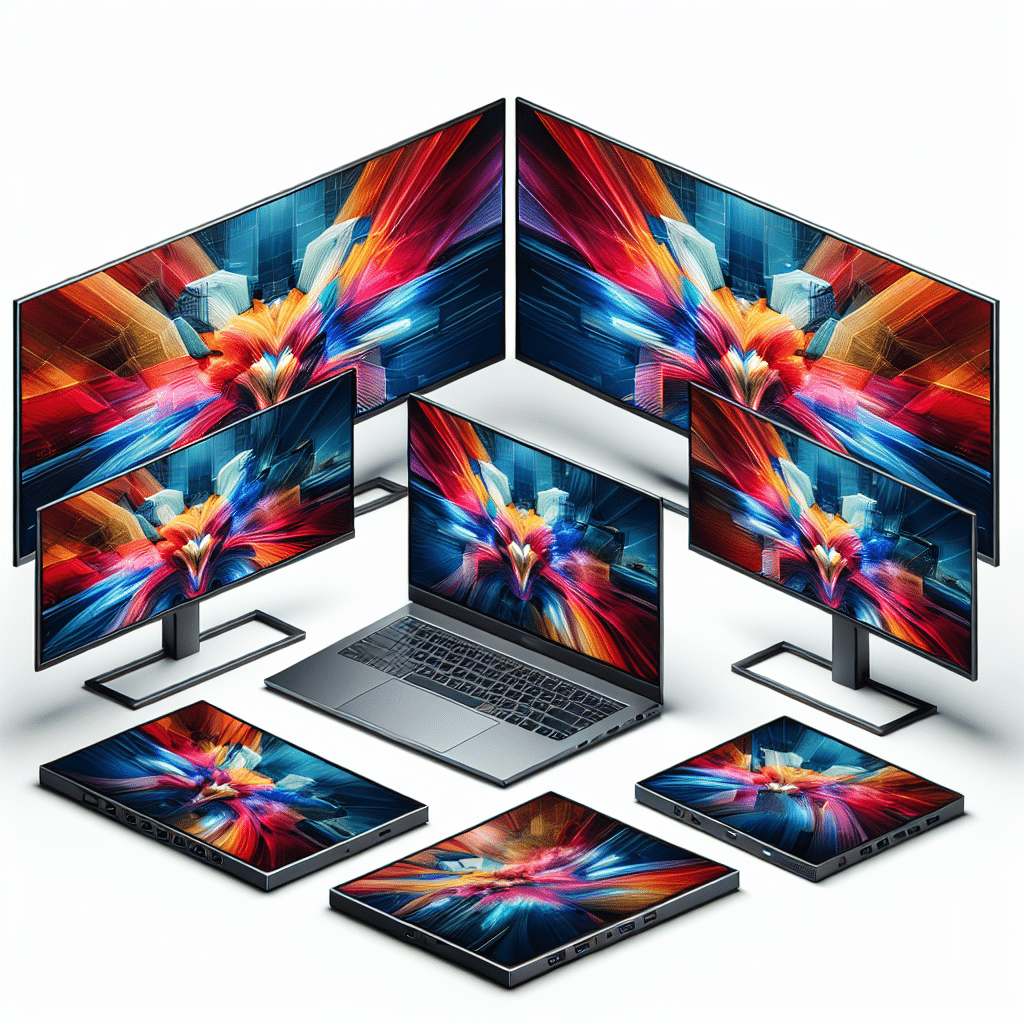Benefits of Portable External Monitors
Portable external monitors are an excellent solution for enhancing productivity, especially for laptop users. These devices allow for extended screen real estate, which can significantly improve multitasking capabilities. Editors, designers, and professionals working in fields that require multiple applications simultaneously will appreciate the increased efficiency that comes with a larger display. Additionally, the use of an external monitor can alleviate eye strain caused by prolonged use of smaller screens.
Key Features to Consider
-
Size and Weight: When selecting a portable monitor, size matters. Most portable monitors range between 13 to 17 inches, making them easy to transport. Weight is also crucial; a lightweight design typically means easier mobility. Aim for monitors weighing around 2 to 3 pounds.
-
Resolution: Look for models that offer at least Full HD (1920×1080) resolution. For users interested in graphic design or media, 4K resolution models provide sharper images and enhanced detail. Higher resolution monitors can also facilitate clearer text for those who spend prolonged hours reading or editing documents.
-
Connectivity Options: Ensure the monitor has versatile connectivity options like HDMI, USB-C, or DisplayPort. USB-C is increasingly popular because it can carry both power and video signal, making it ideal for laptops with limited ports. Additionally, check for compatibility with your laptop operating system—most monitors work seamlessly with Windows and macOS.
-
Panel Technology: The type of panel affects color accuracy and viewing angles. IPS (In-Plane Switching) panels are optimal for professionals in creative industries due to their wider viewing angles and superior color reproduction compared to TN (Twisted Nematic) panels.
-
Power Source: Many portable monitors can be powered via USB, which negates the need for an additional power outlet. This feature enhances portability, allowing you to use the monitor anywhere.
Top Portable External Monitors
-
Asus ZenScreen MB16AC: This 15.6-inch Full HD monitor is known for its sleek, lightweight design, making it extremely portable. The USB-C connection allows for easy plug-and-play operations with most laptops. With its anti-glare coating and adjustable stand, it’s perfect for various environments.
-
AOC I1601FWUX: A 15.6-inch USB-C monitor, the AOC model is another excellent choice for professionals. It offers a slim profile and lightweight design. The auto-pivot feature adjusts the screen orientation, making it perfect for users who frequently switch between landscape and portrait modes.
-
Lenovo ThinkVision M14: The Lenovo ThinkVision M14 features a dual USB-C connection for added versatility. This 14-inch monitor has a color accuracy of 99% sRGB, making it suitable for creative professionals. It’s ultra-slim and comes with an adjustable hinge for easy positioning.
-
LG Gram 16 (16Z90Q): While known primarily as a laptop, the LG Gram’s capability to serve as a portable monitor is noteworthy. Its multi-port connectivity and high-resolution display can double as a secondary screen, perfect for those needing an additional workspace without too much gear.
Functionality and Use Cases
Portable external monitors cater to various use cases.
-
Traveling Professionals: For business travelers, the combination of a lightweight design and USB-C connectivity ensures that productivity does not take a hit on the road. Setting up a workstation in a hotel room or airport lounge becomes seamless, thus enhancing the overall work experience.
-
Creative Professionals: Artists, photographers, and designers benefit tremendously from the increased screen space and better color accuracy available with high-end portable monitors. This additional display can serve as a canvas, secondary workspace, or dedicated area for palettes and toolsets.
-
Remote Workers: The rise of remote work has increased the demand for portable monitors. Home offices benefit from the flexibility these devices provide, allowing for a more organized and productive workspace. Remote workers can easily transition between different locations while maintaining high standards of work.
Choosing the Right Monitor for You
To find the ideal portable external monitor, consider your primary use cases. Frequent travelers may prioritize weight and thinness, while creatives might focus on color accuracy and size. Remember to read expert and user reviews to gauge performance and satisfaction. Testing the monitor beforehand can also help ensure that it aligns with your expectations in real-world usage.
Maintenance and Care
Taking care of your portable monitor is crucial to extend its lifespan. Always store it in a protective case when transporting. Avoid placing heavy items on top of the monitor, and clean it regularly with a microfiber cloth to prevent dust accumulation on the screen.
Conclusion
Portable external monitors can greatly enhance the functionality of your laptop, making them essential tools for anyone who values productivity and versatility. With a wide range of options available, you can find a model that perfectly fits your needs, whether for travel, creative work, or remote office setups. By considering factors such as size, resolution, connectivity, and panel technology, you can make an informed choice that will significantly improve your computing experience.
